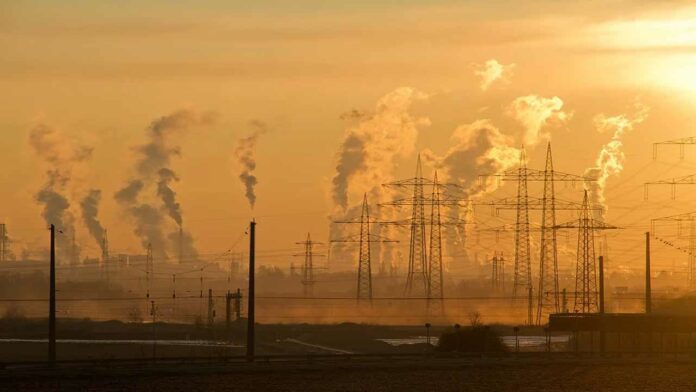India’s Sulphur Dioxide Emissions See Significant Decline, Here’s How This Is Linked To Your Health
According to the report, the credit for this decline in emission goes to India’s effort of making ambitious strides in renewable energy.

At a time when farmers have started their annual exercise of burning crop stubble, which results in deterioration of air quality in the Delhi-NCR region, there is some good news as far as air pollution is concerned.
According to a report, India’s sulphur dioxide (SO2) emissions have recorded a significant decline. The data shows a decline of approx 6% in 2019 as compared to 2018.
The report, which is based on an analysis by the Centre for Research on Energy and Clean Air (CREA) and Greenpeace India, said that this is the steepest dip in four years. However, India remains the top emitter for the fifth consecutive year.
Sulphur dioxide, a colourless gas with a characteristic pungent smell, is produced mainly from the combustion of fossil fuels that contain sulphur, such as coal and oil. For example diesel combustion and burning of coal in-home fireplace for heating.
This harmful gas is also produced during some industrial processes, for example, aluminium smelting, fertilizer manufacturing, and steel making.
“In 2019, India emitted 21% of global anthropogenic (human-made) sulphur dioxide emissions, nearly double that of the second-ranked global emitter, Russia. China is in the third position. The annual report ranks the world’s biggest emitters of sulphur dioxide,” the report said.
Biggest Emission Hotspots In India
The biggest hotspots of sulphur dioxide are thermal power stations (or clusters of power stations) at Neyveli, Sipat, Mundra, Singrauli, Korba, Bonda, Talcher, Tamnar, Jharsuguda, Kutch, Chennai, Surat, Ramagundam, Visakhapatnam, Chandrapur, and Koradi.
According to the report, the credit for this decline in emission goes to India’s effort of making ambitious strides in renewable energy. However, the consistent support given to coal-based energy generation remains the cause of concern.
“Renewable energy capacity has been increasing in India’s power sector, delivering more than two-thirds of the subcontinent’s new capacity additions during the FY 2019-20. However, these efforts are overshadowed by the fact that most of the power plants in India lack flue-gas desulfurization(FGD) units. The FGD units are critical in the process of reducing emissions,” the report said.
Why Sulphur Dioxide Is Harmful
Sulphur dioxide is a poisonous air pollutant and it increases the risk of lung cancer, heart disease, stroke, and premature death. It can irritate your throat, nose, and lungs and causes respiratory problems such as bronchitis. It may cause wheezing, coughing, phlegm, and asthma attacks. The effects are worse when you are exercising.
Those who are most sensitive to sulphur dioxide are children, adults with lung disease, and asthmatics. When exposed to particles of sulphur dioxide for long-term, it can penetrate deeply into the lungs. Children who live in hotspots may develop more breathing problems with aging.
How Can You Reduce The Risk
The exposure during times of elevated concentrations of air pollution should be reduced. One should try to exercise when concentrations of air pollution are lower. Avoid outdoor sources of sulphur dioxide by staying indoors with windows closed. Indoor sources of sulphur dioxide like tobacco smoke, matches, and unvented gas stoves should be avoided.
People with medical conditions, such as chronic respiratory disease (COPD), asthma, or heart disease, should continue to follow a management plan developed by their health care provider. Such people should seek medical attention if they have symptoms such as coughing, wheezing or shortness of breath.
No comments:
Post a Comment